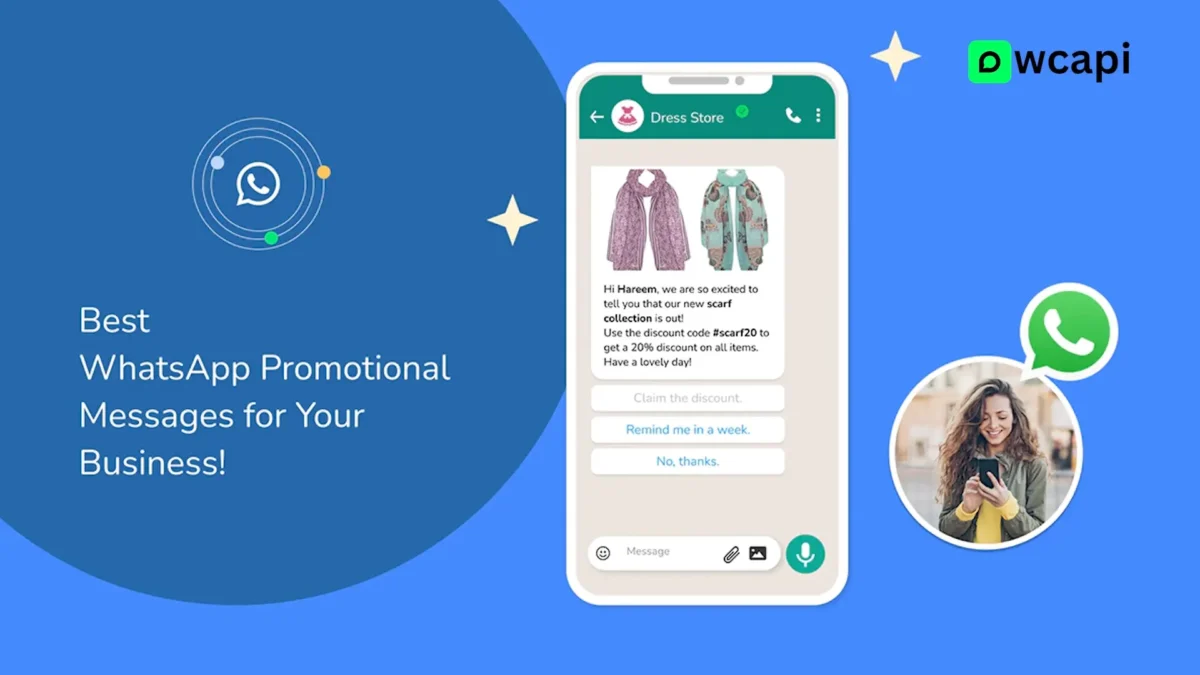Table of Contents
Introduction
Bulk WhatsApp Messaging Guide 2025 has become an essential communication tool for businesses worldwide, enabling seamless interaction with customers. As of 2025, WhatsApp offers various methods to send bulk broadcast messages while ensuring compliance with its policies. This guide will walk you through the best practices, tools, and strategies to send bulk messages effectively and legally.
Understanding WhatsApp’s Bulk Messaging Policies
Before diving into bulk messaging, it is crucial to understand WhatsApp’s policies. WhatsApp discourages spam and automated messaging from unauthorized sources. Businesses must adhere to WhatsApp Business API regulations to avoid being banned.
Key WhatsApp Policies:
- No unsolicited bulk messaging.
- Users must opt-in to receive messages.
- Messages should provide value (e.g., updates, promotions, reminders).
- Use WhatsApp-approved tools to ensure compliance.
Methods to Send Bulk Messages on WhatsApp
1. Using WhatsApp Business App

The WhatsApp Business app allows small businesses to send broadcast messages to up to 256 contacts per broadcast list. This method is suitable for small-scale outreach.
Steps:
- Open WhatsApp Business App.
- Tap the three-dot menu and select New Broadcast.
- Add contacts (ensure they have saved your number).
- Type and send your message.
2. Using WhatsApp Business API
For medium and large enterprises, the WhatsApp Business API provides a scalable solution for bulk messaging. This method requires integration with third-party providers such as Twilio, WATI, or Yellow.ai.
Features:
- Automated messaging with chatbots.
- CRM integration.
- Message personalization.
- High delivery rate.
Steps to Get Started:
- Apply for WhatsApp Business API access via an approved provider.
- Verify your business account.
- Integrate API with your CRM or software.
- Use pre-approved message templates for bulk messaging.
3. Using Third-Party Bulk Messaging Tools
Several tools allow bulk WhatsApp messaging while adhering to WhatsApp’s policies:
- WATI – API-based automation and chatbot solutions.
- Twilio – Offers scalable bulk messaging solutions.
- AiSensy – Enables broadcast messaging with analytics.
- Zoko – Ideal for eCommerce businesses.
- Wcapi – A powerful API solution for WhatsApp bulk messaging, allowing integration with various platforms and automation tools.
Steps:
- Choose a provider and sign up.
- Integrate with WhatsApp Business API.
- Upload your contact list.
- Create and schedule bulk messages.
Best Practices for Bulk Messaging
1. Build an Opt-in Contact List
Never send messages to users who haven’t opted in. Collect contacts through website forms, social media, and offline sign-ups.
2. Segment Your Audience
Segmenting your audience based on preferences, purchase history, or demographics can improve engagement and reduce opt-outs.
3. Personalize Messages
Use dynamic variables to personalize messages with names, order details, or recommendations.
4. Maintain Message Quality
Avoid spammed language and send valuable, relevant content. Overuse of promotional messages can lead to user blocking and account restrictions.
5. Schedule Messages at Optimal Times
Analyze customer behavior to determine the best time to send messages. Avoid sending messages too frequently.
6. Use Rich Media
Enhance engagement by including images, videos, PDFs, and interactive buttons.
7. Track and Analyze Performance
Use analytics tools to monitor open rates, response rates, and customer engagement. Optimize future campaigns based on insights.
Compliance and Legal Considerations
1. Follow WhatsApp’s Acceptable Use Policy
Ensure messages comply with WhatsApp’s policies to avoid bans.
2. Obtain User Consent
Always get explicit permission before adding users to your broadcast list.
3. Provide an Opt-Out Option
Allow users to unsubscribe easily to maintain a healthy sender reputation.
4. Avoid Spam Triggers
Refrain from sending unsolicited messages, using excessive emojis, or repetitive text.
Common Challenges and Solutions
1. Message Limitations
- Challenge: WhatsApp limits broadcast recipients to 256 per list (WhatsApp Business App).
- Solution: Use WhatsApp API for large-scale messaging.
2. Account Restrictions or Bans
- Challenge: Sending bulk messages without permission can lead to bans.
- Solution: Follow WhatsApp’s guidelines and use official API providers.
3. Low Engagement Rates
- Challenge: Users ignore or delete messages.
- Solution: Send engaging, valuable content at optimal times.
4. High Opt-Out Rates
- Challenge: Many recipients opt out of bulk messages.
- Solution: Ensure content is relevant and non-intrusive.
Future of Bulk Messaging on WhatsApp
With WhatsApp continuously evolving, businesses can expect more automation, AI-driven chatbots, and interactive messaging features. Staying updated with WhatsApp’s policies and leveraging new technologies will help businesses maximize the potential of bulk messaging.
Conclusion
Sending bulk broadcast messages on WhatsApp in 2025 requires a strategic approach, compliance with policies, and the right tools. Whether using the WhatsApp Business App for small-scale messaging or integrating WhatsApp Business API for automation, businesses can effectively engage their audience while maintaining high-quality communication. By following best practices and leveraging analytics, businesses can optimize their outreach, improve customer satisfaction, and drive higher engagement through WhatsApp messaging.



